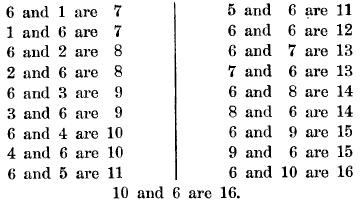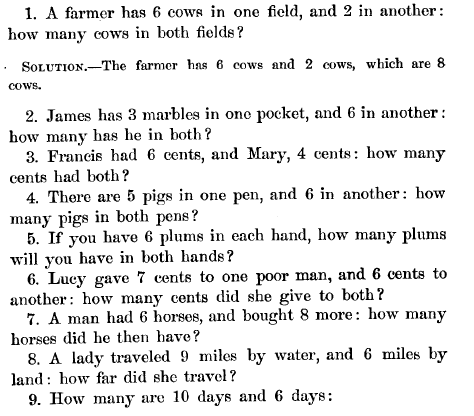 Ray's New Primary Arithmetic
Ray's New Primary Arithmetic
Ray's New Primary Arithmetic
Ray's New Primary Arithmetic



 Ray's New Primary Arithmetic
Ray's New Primary Arithmetic
Ray's New Primary Arithmetic
Ray's New Primary Arithmetic

Follow the step-by-step instructions below to teach the lesson.
Progress to the next lesson when children master the current lesson.
Value mastery over speed of progression.
STEP 1
Teach children to recognize and combine groups of physical objects up to 16 (without counting). Use a variety of objects that interest children such as coins, books, dinosaurs, action figures, cars, and stuffed animals.





STEP 2
Children add objects they can't see, but can imagine (bears, mountains, trees).
STEP 3
In this step, do not mention objects. Children add numbers directly.
STEP 4
Direct children to write and recite the addition problems in the table above. For example, children write and recite:
Repeat for each combination in the table until the children master the tasks.
STEP 5
Begin to teach place value.
STEP 6
Assess mastery by reading aloud the word problems listed below and having the children mentally compute and recite the solutions.
If children have difficulties, repeat the prior steps and then reassess.
